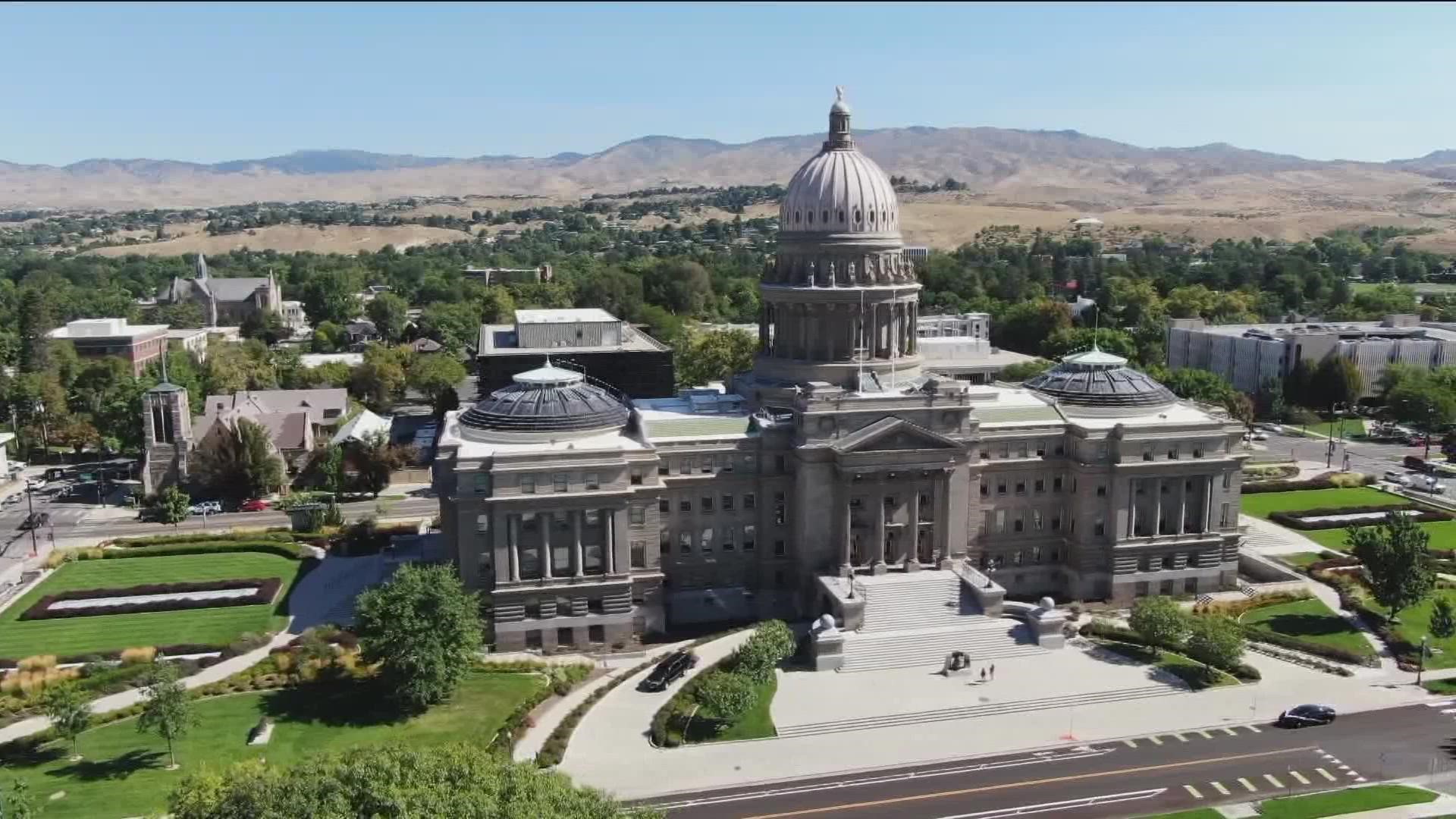BOISE, Idaho —
This article originally appeared in the Idaho Press.
Agriculture is important in Canyon County — but how important? And how should the government best support the protection of agricultural lands while refraining from telling landowners what to do?
To address these questions, David Anderson, the Idaho program manager for the American Farmland Trust and a fifth-generation Idahoan from a ranching family, presented his research on the importance of agriculture in the area to the Canyon County Board of Commissioners on Tuesday, with many county planning staff in attendance.
These are just some of the questions that county planners and elected officials are grappling with as they develop Canyon County’s new comprehensive plan, the document that will guide development and regulation of development there for the next 10 years. The process of developing the document, which began in 2019, is still underway, with public hearings on the most recent draft expected to be scheduled in late June or possibly early July, as previously reported.
The American Farmland Trust saw a need to describe the significance of agriculture to Canyon County’s economy because the conversion rate of farmland to developed land in the Treasure Valley is “among the highest in the country,” Anderson said.
Yet agriculture is a “significant driver” of Canyon County’s economy, Anderson said. The current value of the agricultural economy in Canyon County is just under $620 million, he said. In 20 years, if no cropland were converted, that value would be over $1 billion, he said. He wanted to create a best-case estimate of how much agricultural land could be lost if the county adopts its current comprehensive plan, and what that would do to the value of the agricultural economy.
To do so, he used data from the U.S. Department of Agriculture to locate where the top 12 most valuable crops are grown in the county, he said. In order, those crops are alfalfa, winter wheat, corn, mint, sugarbeets, dry beans, onions, potatoes, hops, orchards; spring wheat, other grains and pulses; and vegetables, Anderson said.
The U.S. Department of Agriculture does not distinguish crops grown for seed harvesting from crops grown to be eaten, he said. Canyon County is a significant producer of seed crops, many of which are shipped elsewhere to grow food.
Canyon County is over 386,000 acres in size; 52.3% of the land is cropland, he said. Of that land, 76.5% is used to grow the 12 most valuable crops grown in the county, he said.
From there, he looked at where those 12 crops are grown within the county’s 10 Areas of City Impact, often referred to as areas of impact. These are the areas surrounding cities that the cities are “expected to grow and annex,” according to the current draft of the county’s comprehensive plan. The borders of those areas are “negotiated between City and County officials,” the draft says.
The picture seems grim: even if cities and counties limited development to these areas of impact, the county would still lose 30% of the agricultural acreage used to grow the 12 most valuable crops, Anderson said.
“The way to look at that is that, essentially in this plan, that’s what you’re saying you’re willing to sacrifice,” Anderson said.
That loss of agricultural land translates to more than a $213 million loss in today’s dollars over 20 years, he said. He said this represents a conservative picture of what could happen because it does not consider areas that could be developed outside of the areas of impact, and the overall estimate of economic value used a conservative multiplier, he said.
Some in the county have complained that the county commissioners are eager to approve development because doing so means “adding more value to the tax base,” said Commissioner Keri Smith. She asked Anderson if any studies have been done that showed the opposite.
The American Farmland Trust did a suite of studies looking at the issue in different parts of the country, Anderson said. It did not do a study in Canyon County, but the University of Idaho did, he said.
Researchers consistently found that for every property tax dollar collected from a farm, it costs about $0.40 to provide community services to residents of that land, he said. Community services could include fire or police services.
But when agricultural land is converted to development, it costs $1.20 to provide services to residents for every property tax dollar collected, he said. It does not matter where in the country development is taking place or what kinds of crops are being grown, he said. Eventually, the farmland trust stopped doing such studies because the results were consistent in every location.
“Another way of looking at this is that property taxes you are collecting on working farms are subsidizing the cost of community services in your cities,” Anderson said.
This difference illustrates the need to balance providing for the estimated 100,000 new residents expected to move to the county in the coming years, and protecting and enhancing the county’s economy, he said.
This article originally appeared in the Idaho Press. Read more at IdahoPress.com
Watch more Local News:
See the latest news from around the Treasure Valley and the Gem State in our YouTube playlist:



